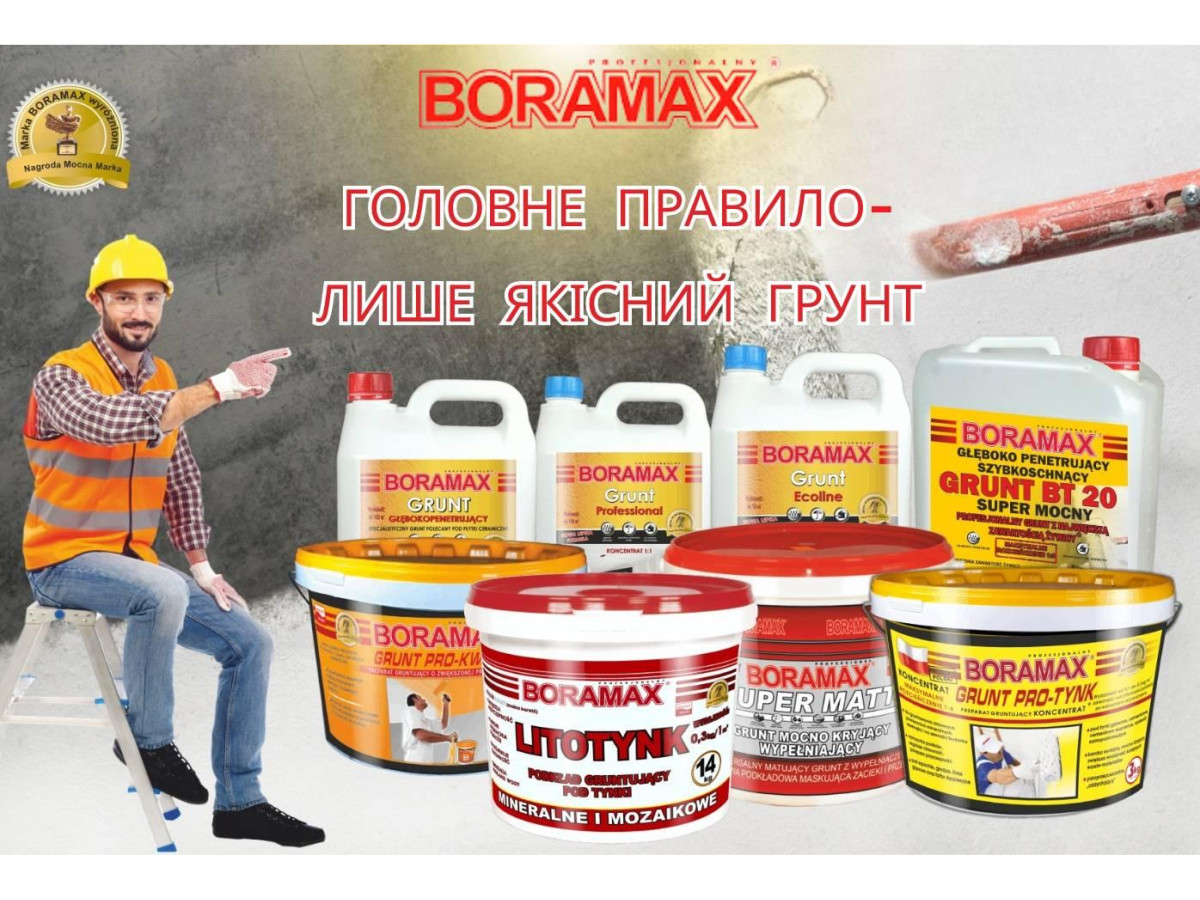Deep penetrating primer for waterproofing is a key element in the process of protecting building structures from water. This special primer is used to prepare surfaces before applying the main waterproofing materials, providing an additional level of protection.
Key advantages:
- Increased adhesion. Provides better adhesion of the waterproofing coating to the surface.
- Protection against moisture. Prevents the penetration of water and moisture into the structure.
- Durability. Extends the service life of waterproofing coatings.
Primer selection criteria
The choice of a deep penetrating primer for waterproofing is an important decision that has a significant impact on the efficiency and durability of waterproofing works. Here is a detailed overview of the key criteria to consider:
Compatibility with the surface:
- Primers that penetrate the structure of concrete, providing strength and durability.
- Selecting products that not only protect against moisture but also prevent wood rot.
- Products that provide additional durability and protection against water penetration.
Chemical composition:
- Water-dispersion primers. Environmentally safe and have a low level of toxicity.
- Polymer primers. Provide excellent adhesion and durability.
- Silicone primers. Excellent water-repellent properties.
Product properties:
- Water resistance. It is important that the primer can withstand constant contact with water.
- Resistant to UV radiation. Especially important for outdoor use.
- Elasticity. Allows the primer to expand and contract with the surface material, preventing cracks.
Environmental friendliness and safety:
- Low or no volatile organic compounds (VOCs).
- Safety for human health and the environment.
Ease of use:
- Selecting products with optimal drying times.
- Ensuring the possibility of application with various tools (brush, roller, spray).
Application of the primer
The use of a deep penetrating primer is critical for effective waterproofing of building structures. Adherence to the correct procedure and application methodology ensures maximum product effectiveness. Here are the detailed steps:
Surface preparation:
- Remove all dirt, dust, oil, grease and other substances that may affect the adhesion of the primer.
- Fill cracks and level the surface if necessary.
- Use a degreaser if the surface has grease stains.
- The surface must be completely dry before applying the primer.
Checking the material:
- Stir the primer thoroughly before use to ensure homogeneity.
- Apply a small amount to a part of the surface to ensure the correct colour and consistency.
Application of the primer:
- Use a brush, roller or spray for application. The choice depends on the type of surface and primer.
- Apply a thin but even layer. Avoid puddling or over-application.
- Follow the manufacturer's recommendations for the number of coats.
Drying and drying:
- Allow sufficient time for the primer to dry. The time may vary depending on the humidity and temperature.
- Make sure that the primer is completely dry before applying the waterproofing coating.
- Additional coats: If instructed, apply additional coats of primer following the same process.
- After drying, inspect the surface for evenness and absence of gaps.
- After the primer has completely dried, the surface is ready for application of the main waterproofing coating.
The use of a deep penetrating primer for waterproofing is an important step in the process of ensuring the durability and reliability of building structures. The correct choice and high-quality application of this material provides effective protection against moisture and extends the service life of buildings.
.svg)

Write a comment